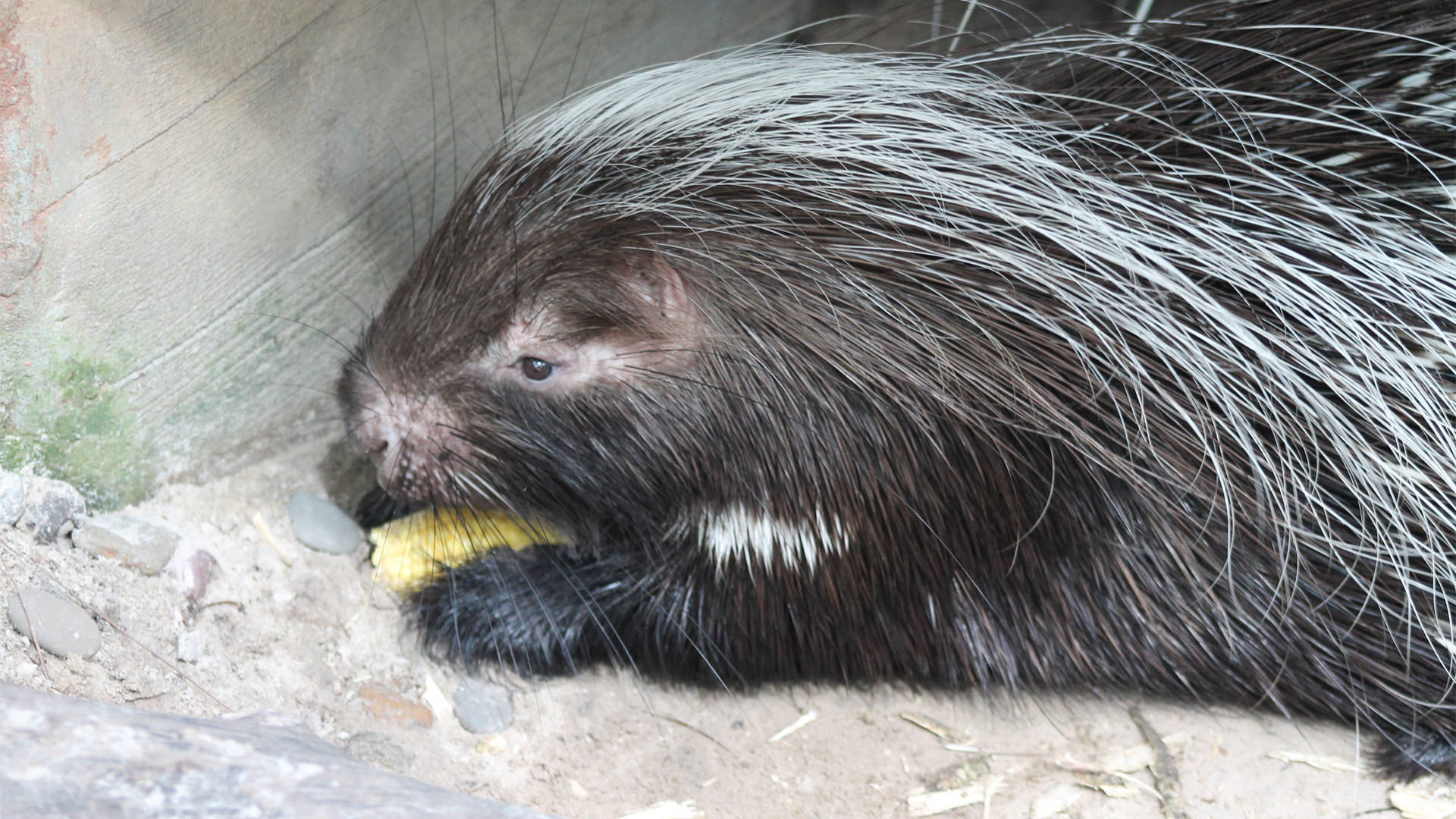
The African crested porcupine is the largest species of porcupine in the world. They are nocturnal, spending most of their day sleeping.
Rodents are mammals including rats, mice, porcupines, beavers, and more. Rodents, such as our African crested porcupines, have ever growing front teeth (called incisors). Because of this, they must grind their teeth down to prevent them from growth into the mouth which would prevent them from being able to eat. We provide our porcupines with logs and branches to chew on, in addition to crunchy food items. The African crested porcupines we have here at the Zoo are actually sisters! You can see them sleeping together, with their quills facing outwards- a natural behavior. In their natural habitats, African crested porcupines often steal burrows from other animals, and will sleep head first with their quills facing outwards as defense. No one ever wants to go in after that!

You will often hear the keepers at the Zoo refer to these porcupines as Hystrix after their scientific name, Hystrix africaeaustralis, because African Crested porcupine is such a mouthful.

Kiara
The belief that porcupines can shoot their quills is an old wives' tale. Their quills are made up of modified hair attached to their body. When chased by a predator, however, a porcupine will stop suddenly, causing the predator to run into the quills. The quills have a tiny barb on the end that stick into the predator, giving the illusion that the porcupine "threw" its quills.
Southern Africa
Open areas with vegetation
2–3 feet long | 20–65 pounds
Bark, roots, fruits, berries
Lions, leopards, hyenas
Quills
1–4 offspring per litter
Least Concern
15–20 years
